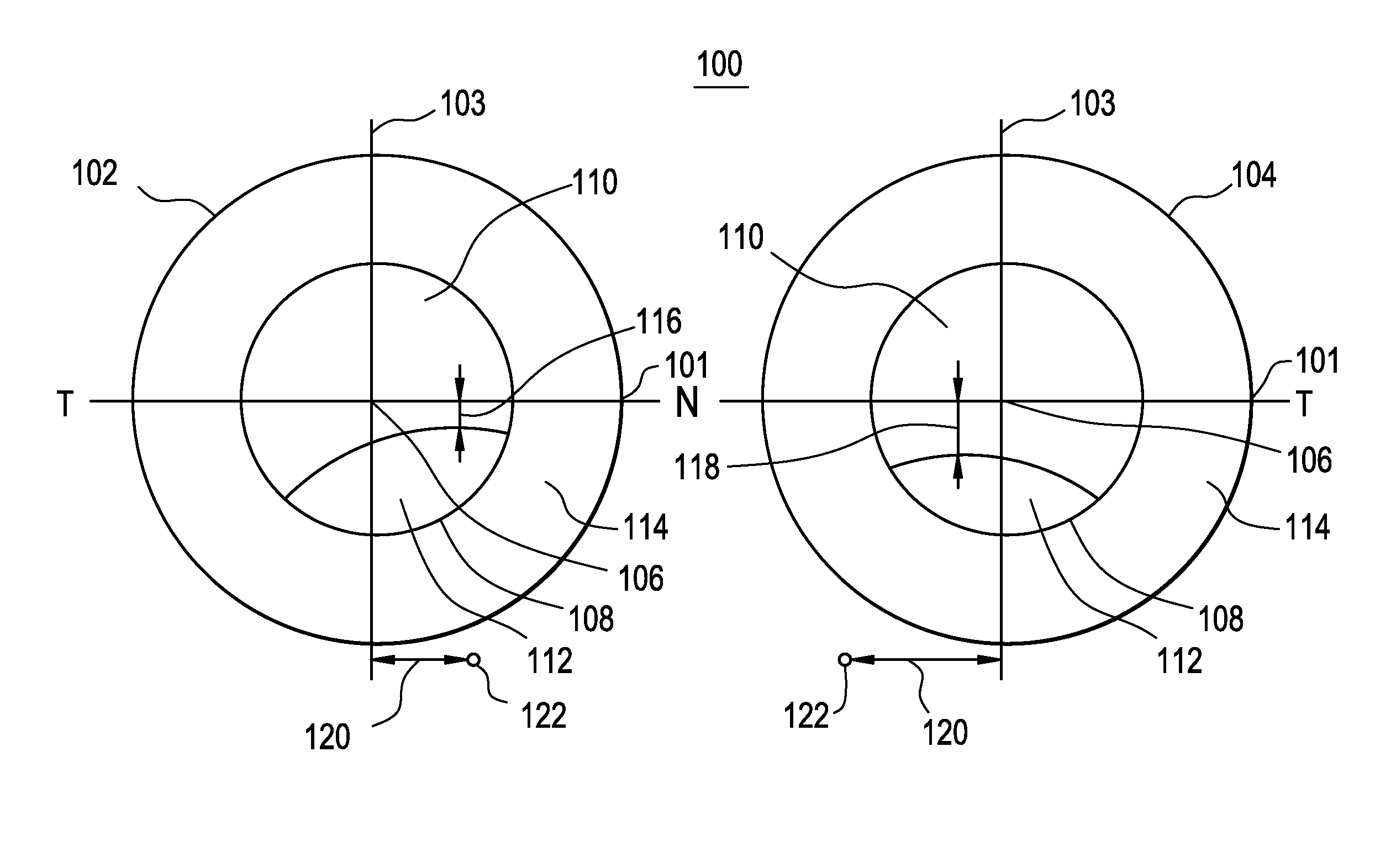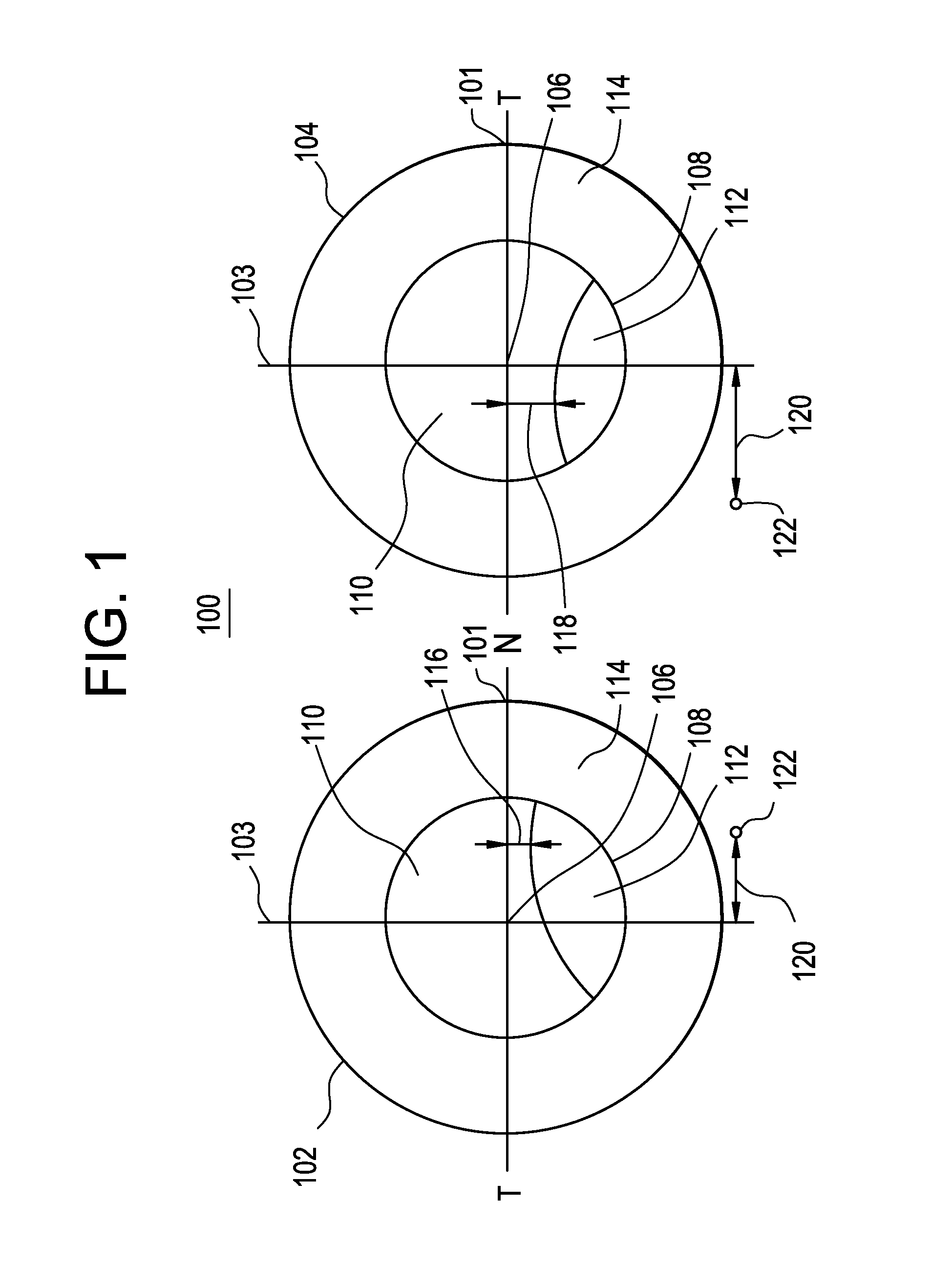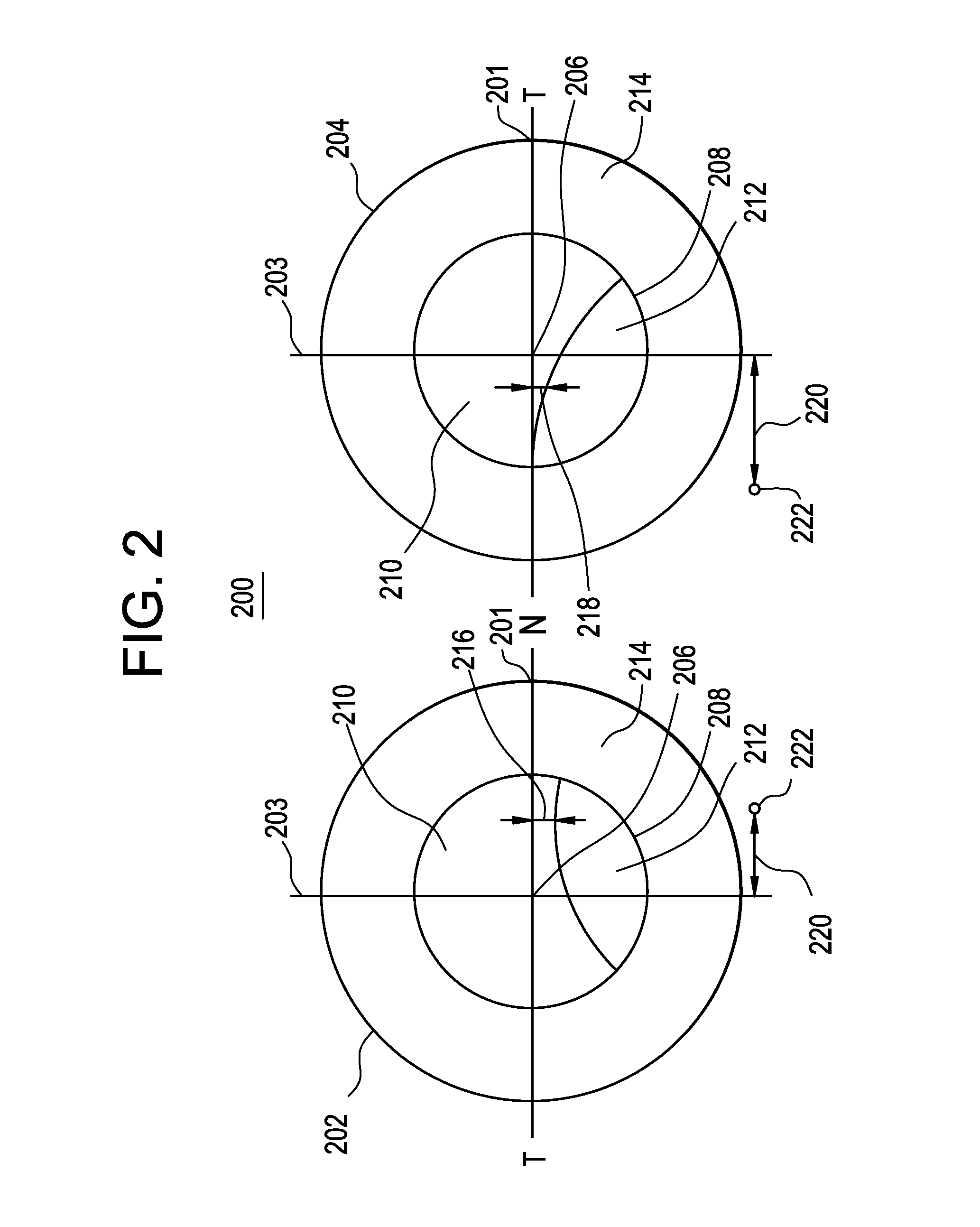Translating presbyopic contact lens pair
- Summary
- Abstract
- Description
- Claims
- Application Information
AI Technical Summary
Benefits of technology
Problems solved by technology
Method used
Image
Examples
Embodiment Construction
[0027]The present invention provides methods for correcting presbyopia, contact lenses for such correction, and methods for producing such contact lenses. The contact lenses of the present invention are translating, multifocal contact lens pairs comprising optical power zone features which are different in the first lens intended for the first eye as compared to optical power zone features of the second lens intended for the second eye. The optical power zones of the first and second lens of the pair may differ in segment height, power, asphericity, shape, orientation, inset, and / or any combinations thereof. The outer circumference of each lens of the translating lens pair may be substantially circular or smooth and continuous, flat and truncated, or it may be asymmetric. The contact lenses of the present invention comprise three main zones; namely, an optical zone, a peripheral zone located radially outwards from the optical zone with features which enable the lens to translate, an...
PUM
 Login to View More
Login to View More Abstract
Description
Claims
Application Information
 Login to View More
Login to View More - Generate Ideas
- Intellectual Property
- Life Sciences
- Materials
- Tech Scout
- Unparalleled Data Quality
- Higher Quality Content
- 60% Fewer Hallucinations
Browse by: Latest US Patents, China's latest patents, Technical Efficacy Thesaurus, Application Domain, Technology Topic, Popular Technical Reports.
© 2025 PatSnap. All rights reserved.Legal|Privacy policy|Modern Slavery Act Transparency Statement|Sitemap|About US| Contact US: help@patsnap.com



